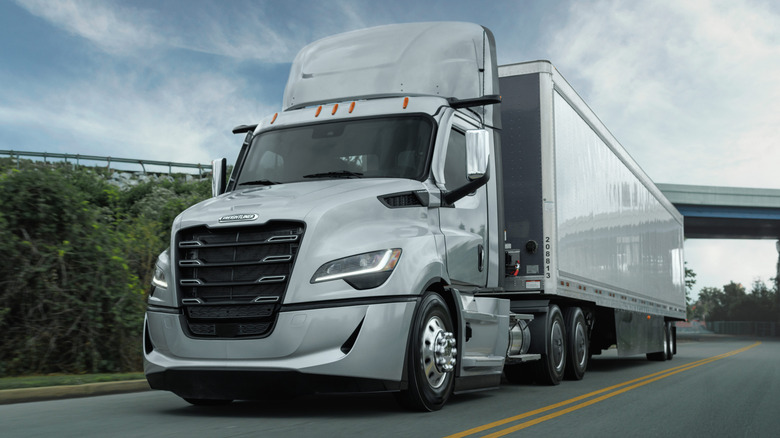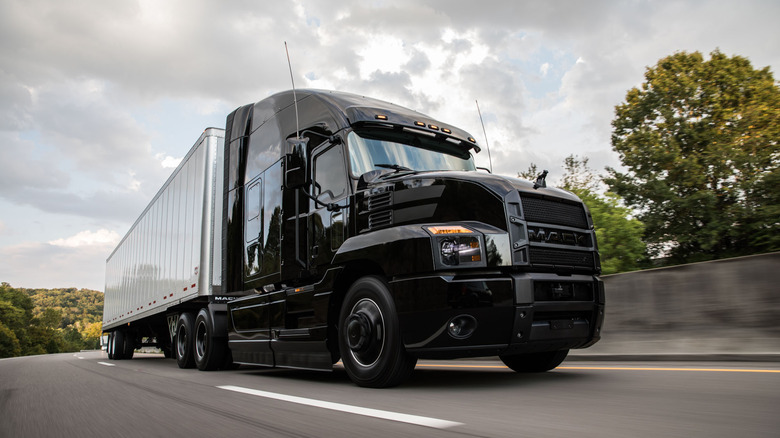What Is The Average MPG Of A Semi And How Far Can They Go On One Full Tank?
While cars have become increasingly more efficient in recent years thanks to advances in fuel-saving technology and the increasing adoption of hybrid powertrains that promise the most electric charge per battery charge, semi trucks have remained generally inefficient. Their fuel consumption can vary significantly based on what it's hauling, the terrain it's driving on, and the powerful engine under the hood. However, even a highly conscious driver with a modern truck isn't likely to hit much above 10 mpg. The average figure across the industry is even lower, although exact estimates differ between studies.
According to data from the U.S. Energy Information Administration, which has tracked semi truck fuel efficiency averages since 1949, trucks in 2023 — the most recent year of data — averaged 7.1 mpg. That's only a small improvement over the 5.4 mpg average recorded back in 1980. A 2022 study by the Bureau of Transport Statistics saw a similar figure, with trucks achieving 6.9 mpg on average.
Both studies show a rise in average efficiency over the last decade, albeit by only around a single mile per gallon. Data gathered by tracking device manufacturer GeoTab in 2017 showed that average mpg figures differed between states, with Texan trucks averaging 5.6 mpg, the lowest in the country. Those in Massachusetts returned the highest figure at 6.37 mpg.
How far can a semi truck go on a tank?
The distance a semi truck can travel on a full tank is dependent on its model, its maximum fuel capacity, and the number of tanks it has. Trucks can have either one or two tanks with varying sizes, ranging anywhere from 100 to 150 gallons each. Using the Energy Information Administration's average mpg figure of 7.1 mpg, we can calculate that a truck with two 150-gallon tanks could travel 2,130 miles before emptying both tanks.
However, most truckers don't fill their tanks past 95% to prevent them from overflowing and won't let them get below 25% before refueling. That leaves only 70% of the tank usable between refills. Accommodating for that rule, the same truck would be able to travel 1,491 miles before stopping.
A truck that does mostly short distance trips won't need to carry around as much heavy fuel, which helps keep the overall weight of the vehicle down. But, it will be able to travel far less before needing to refuel. On a single 100-gallon tank, a truck averaging 7.1 mpg and following the 95%-25% rule will be able to travel 497 miles between stops.

